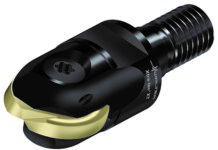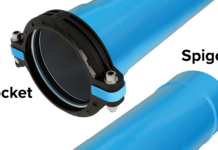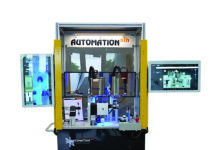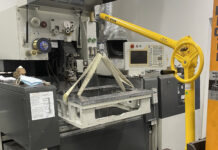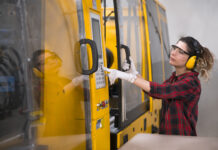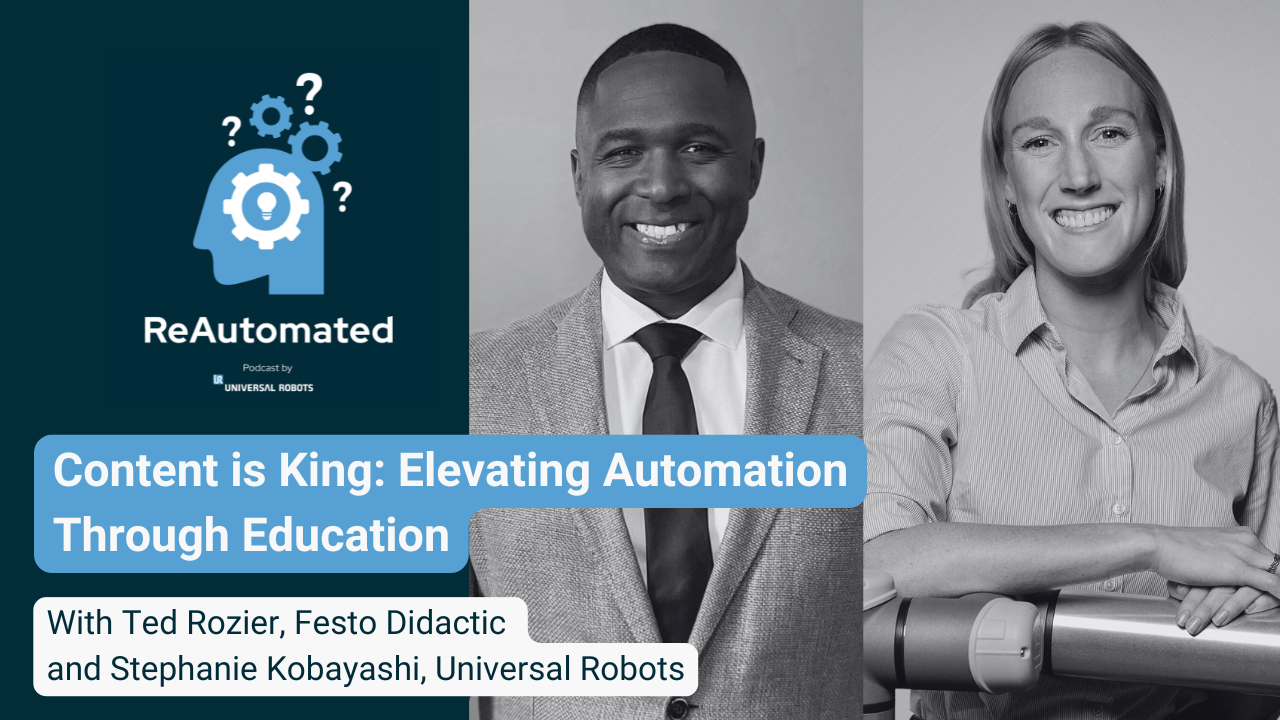
As the manufacturing landscape continues to evolve, driven by rapid advancements in automation and emerging technologies, there is a growing need to ensure the future workforce is equipped with the necessary skills to thrive in this changing environment. At the forefront of this effort are industry leaders like Ted Rozier of Festo Didactic and Stephanie Kobayashi of Universal Robots, who are working to bridge the gap between industry and academia.
In a recent interview on Universal Robots’ “Reanimated” podcast, Rozier and Kobayashi shared their insights on the critical role of education in preparing the next generation of manufacturing professionals.
Rozier, the Director of Digital Advanced Technology and Robotics for Festo Didactic North America, has a unique perspective on this challenge, having spent 18 years as a system integrator before transitioning to the education space. “When I got the opportunity to join Festo and bring that 18 years of experience into the classroom, I realized that there was more to it than just putting the emerging technology in front of the students,” he explained. “Part of that full-blown turnkey solution is the curriculum.”
This sentiment is echoed by Kobayashi, who is the Global Industry Segment Manager for Education at Universal Robots. She too recognized the importance of curriculum and content development when she first started working on education programs while at Zeiss, a leading manufacturer of optical and optoelectronic systems.
“I actually sat down and built educational curriculum and content based off of our industrial training materials that we had, that could go and be used by schools for teaching,” Kobayashi said. “I could really resonate with what Ted said about content being king.”
The emphasis on content and curriculum is critical, as it goes beyond simply providing the technology and equipment. It’s about ensuring that students not only have hands-on experience with the latest tools and systems, but also a deep understanding of the underlying principles and concepts.
“When we speak specifically to the project that we’ve worked on together with the robot safety training cart, something that I love about that is that in working with different schools, when they pull the product out the box, they want to know how do I get started,” Rozier explained. “They don’t want to know about theory. They want, you need to be able to show what it does.”
Kobayashi echoed this sentiment, highlighting the importance of creating a comprehensive learning experience that combines theory, interactive lessons, hands-on activities, and knowledge checks. “We’ve got an amazing e-learning platform. It’s actually free on Universal Robots Academy. And you can go in and you can actually start programming through an interactive e-learning interface without a robot, without anything next to you. So really just start to get a feel for how this is going to work.”
But the learning journey doesn’t stop there. Rozier emphasized the significance of certification, noting that it serves as a critical bridge between education and industry. “When a student goes to get a job, how is he interviewed? And if you can show me a certificate that you have specific skill sets, I know how to query you to see if you know what you’re talking about. Without the certificate, I have to start from scratch.”
This focus on certification is not just about validating the student’s knowledge, but also about ensuring that the curriculum and content are truly aligned with the needs of industry. “Curriculum is the gas to certification. You can’t certify unless you’ve done a good job on the curriculum side. If you do it the opposite, it’s not going to be stackable,” Rozier explained.
 The partnership between Festo Didactic and Universal Robots is a prime example of how industry and academia can collaborate to create robust, industry-aligned educational programs. By integrating Universal Robots’ collaborative technology into Festo’s “Manufacturing Production System” (MPS) training cart, they’ve developed a comprehensive learning platform that goes beyond just teaching the basics of robotics.
The partnership between Festo Didactic and Universal Robots is a prime example of how industry and academia can collaborate to create robust, industry-aligned educational programs. By integrating Universal Robots’ collaborative technology into Festo’s “Manufacturing Production System” (MPS) training cart, they’ve developed a comprehensive learning platform that goes beyond just teaching the basics of robotics.
“That cart attaches to approximately 10 other modules. And that’s why it’s a great transition from the core into the systems approach, because now you’re not only building a part, but it’s going to be processed,” Rozier said. “So that student, not only do they understand or get a chance to learn about safety that’s integrated into that system, but functional safety. What does it mean to the whole system?”
Kobayashi emphasized the importance of this systems-level approach, noting that robots rarely operate in isolation in the real world. “Robots are never working alone on a production floor. Anyone who’s worked with robotics knows that. And while it’s really important to get a base understanding of operation with robotics, which universal robots curriculum and hardware set is a really great place to start with that. Students really need that real-world exposure to other elements, to PLC, to really understand how robots communicate and interact with other peripheral equipment.”
This holistic approach to education, integrating theory, hands-on practice, and real-world systems thinking, is a testament to the collaborative efforts of Festo and Universal Robots. But it’s not without its challenges, as Rozier pointed out.
“The hardest part, I would say, when it comes to, we’ll speak to emerging technology and some of the buzz out there, Industry 4.0. Okay. When you talk about our communication architecture, sometimes you want to walk in the classroom and you want to hit the easy go button. Okay. A tightly integrated system, when everything is aligned and it’s put together, it runs like a champ. But there are issues come up within our cyber physical platform and manufacturer production system.”
To address these challenges, Festo has incorporated an “Overall Equipment Effectiveness” (OEE) platform, which adds an additional layer of complexity to the learning experience. “It takes the student and makes it where they’re not just working on or troubleshooting electrical, mechanical, IELTS software. But big picture, what does the CEO care about in a manufacturing plant? Throughput. So, when you start to integrate all of that technology, try and slow everyone down and get them to understand each layer. It does take a little more time.”
But the payoff is worth it, as Rozier and Kobayashi both believe that this holistic, industry-aligned approach to education is crucial in bridging the skills gap and preparing the workforce of the future.
“Employability. We’ve seen students go through and they’re able to walk into a manufacturing plant and they’re able to read the program,” Rozier said. “They should be able to read that story, just like they went to their new employer. They walk in that manufacturing plant up to the line, whatever it is, they’re going to grab the program and they should be able to read it.”
Kobayashi echoed this sentiment, emphasizing the value that these educational programs bring to both students and employers. “That tells future employers that this student understands these skills and these competencies and has this level of understanding on a specific topic, whether that be mechatronics, industry 4.0, robotics. So really brings a lot of value, I would say, both to students, but then also to those future employers that they can understand where students are understanding is and what their specializations are.”
As the manufacturing landscape continues to evolve, the importance of bridging the skills gap through innovative and industry-aligned educational programs cannot be overstated. Rozier and Kobayashi’s work at Festo Didactic and Universal Robots, respectively, serves as a shining example of how industry and academia can collaborate to elevate the future of automation and manufacturing.
“It’s one of the things that really excites me. How can you demystify emerging technology methods in the classroom?” Rozier said. “Being able to bring smart manufacturing into the education space is extremely exciting. It’s what gets me up every morning.”
By prioritizing content, curriculum, and industry-relevant certification, while also embracing a systems-level approach to learning, Festo and Universal Robots are paving the way for a new generation of manufacturing professionals who are equipped to thrive in the ever-changing landscape of automation and Industry 4.0. This collaborative effort serves as a model for how industry and academia can work together to address the skills gap and ensure the long-term success of the manufacturing sector.

